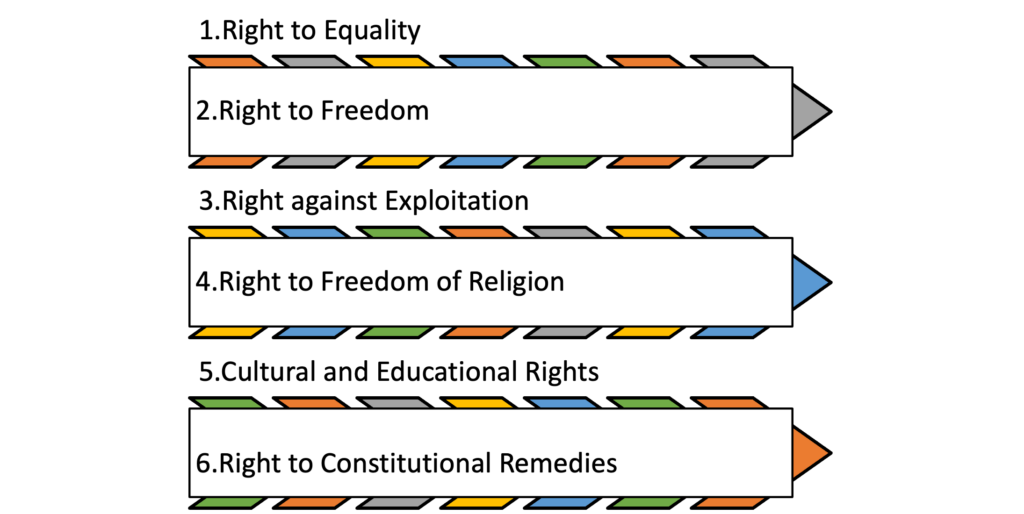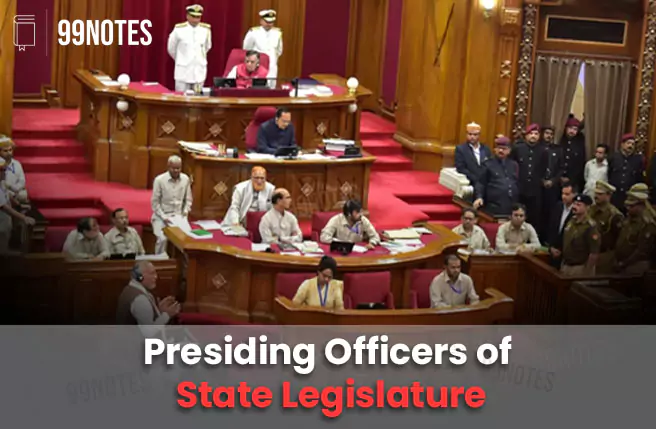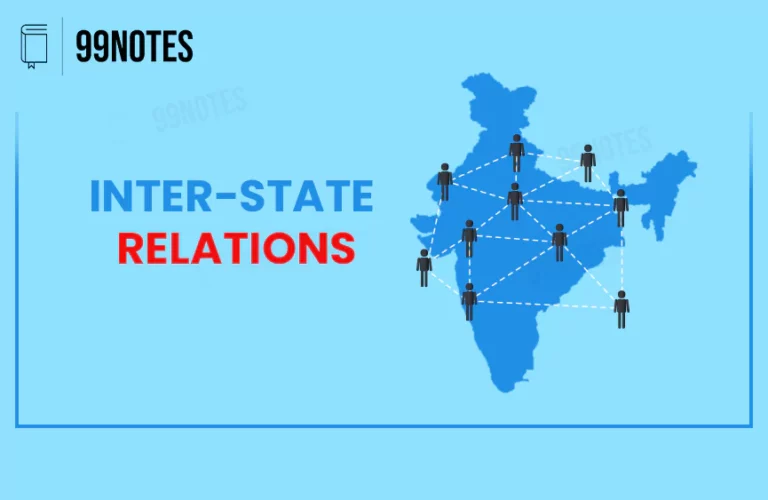Sources of Indian Constitution- Complete Notes for UPSC Exams
Editor’s Note: A student can choose to skip this Article, and it can be revisited once the syllabus till the Governor is complete. At that point, one should be better equipped to understand this Article and compare the Indian Constitution with all the other constitutions of the world.
Sources of Indian Constitution
The Sources of Indian Constitution are diverse, from Government of India Act 1935 to Global influences like British, American, French, Canada, and Irish constitutions. This harmonious blend has established a governance model that champions democracy, justice, and equality, embodying the diverse ethos of India. Below is the list of Important Sources of Indian Constitution:
- Government of India Act of 1935
- British Constitution
- United States Constitution
- Irish Constitution
- Canadian Constitution
- Australian Constitution
- French Constitution
- Weimar Constitution of Germany
- Soviet Constitution (USSR)
- South African Constitution
The constitution makers of India wanted to accommodate universal values of democracy in the Indian Constitution; hence the constituent assembly adopted several provisions from the Constitution of other countries and adapted them to the needs of the country.
On the accusation that the draft constitution heavily borrowed from the Government of India Act 1935, BR Ambedkar, chairman of the drafting committee, said, “Nobody holds any patent rights in the fundamental ideas of a Constitution”. In fact, he proudly claimed that the Constitution has been framed after “ransacking all the known Constitutions of the World.”
Government of India Act 1935
The Government of India Act 1935 served as a precursor to the Constitution of 1950. The act was the longest act passed by the British government and consisted of 321 sections and 10 schedules.
It drew its content from four sources
- Report of the Simon Commission
- Discussions at the Third Round Table Conference which included inputs from Indian Princes, various elected representatives and class-based leaders.
- The White Paper of 1933
- Reports of the Joint Select Committees
Features of the Indian constitutions which have been borrowed from the GoI Act 1935 are:
- The federal scheme of the government,
- Office of Governor,
- Establishment of the Supreme Court,
- Institution of Public Service Commission,
- Emergency provisions.
- Administrative details.
In essence, most of the provisions of the Indian Constitution are directly inherited from the Government of India Act of 1935, which itself is called the ‘Mini-constitution’.

The United Kingdom
1. Parliamentary Form of Government and Cabinet System
- The concept of a parliamentary form of government is derived from Great Britain.
- The government is led by a cabinet of ministers headed by the Prime Minister.
- The PM is the head of the government, while the President is the nominal head of the state.
- The presence of opposition parties ensures checks and balances on the ruling party.
2. Rule of Law:
- The principle of the rule of law originated in Great Britain and has been incorporated into the Indian Constitution.
- It states that the country is governed by the law and not by individuals or representatives.
- Article 14 guarantees equality before the law for all individuals.
3. Single Citizenship:
- The concept of single citizenship is borrowed from British constitutional practices.
- It means that a person born or migrated to Indian territory enjoys the political and civil rights of India alone, without any other country’s citizenship simultaneously.
- India does not allow dual citizenship and does not recognise state citizenship within its territory.
4. Prerogative Writs:
- The power of issuing writs is inherited from British legal traditions.
- The Supreme Court and High Courts in India have the authority to issue writs to protect the fundamental rights of citizens.
- The five types of writs include Habeas Corpus, Mandamus, Certiorari, Prohibition, and Quo-Warranto.
- These writs provide remedies to individuals when their fundamental rights are violated.
- Articles 32 and Article 226 of the Indian Constitution outline the provisions for these writs.
5. Parliamentary Privileges:
- These are legal immunities and special rights enjoyed by the members of legislatures.
6. Collective Responsibility:
- Under Article 75, it is provided that the council of ministers shall be collectively responsible to the Lok Sabha.
The United States of America
1. The Idea of Fundamental Rights:
- The concept of fundamental rights has been taken from the United States. As soon as the American Constitution was formed in 1789, a debate on including Fundamental rights started. The first ten amendments introduced a ‘Bill of Rights’ in the American Constitution.
- Fundamental rights ensure equal standing in society and protect basic human rights.
- Articles 12-32 of the Indian Constitution outline the Six fundamental rights granted to citizens, which include:

2. Judicial Review:
- The provision of judicial review is another feature inspired by the United States. In the US, a principle of Judicial supremacy is followed.
- The Supreme Court is the Final interpreter of the Constitution: Judicial review empowers the judiciary to interpret the Constitution and review the actions of the legislature and executive.
- If any law or action is found to be in conflict with the Constitution, the judiciary can declare it null and void.
- This ensures the supremacy of the Constitution and upholds the principles of constitutionalism.
3. Impeachment of the President and Removal of Judges:
- The Indian Constitution incorporates provisions for the impeachment of the President and the removal of judges.
- The process of impeaching the President is outlined in Article 61, which involves legislative procedures conducted by both houses of Parliament.
- Article 124(4) of the Indian Constitution, along with the Judges Inquiry Act of 1968, governs the removal of judges.
- These provisions ensure accountability and uphold the principle of separation of powers within the Indian democratic system.
Canada
The Indian Constitution borrowed several features from the Canadian Constitution, including:
- A strong central government in a federal system,
- The allocation of residuary powers to the centre; article 248 grants Parliament exclusive power to legislate on unmentioned subjects
- Appointment of state governors by the centre,
- Advisory jurisdiction of the Supreme Court; Article 143 allows the President to seek the Supreme Court’s opinion on public matters.
France
- The ideals of Liberty, Equality, and Fraternity in the Indian Preamble were inspired by the French Constitution.
- The Constitution of India established the Indian state as the “Republic of India,” drawing influence from the constitutional legacy of France.
Australia
- The provisions of Freedom of Trade and Commerce within the country and between states were borrowed from the Constitution of Australia. Articles 301-307 of the Indian Constitution outline these provisions.
- Additionally, the concepts of the Concurrent list and joint sitting of both houses of Parliament were also influenced by Australia.
South Africa
- From the Constitution of South Africa, we borrowed the provisions of the procedures of the amendment in the Constitution and the Election of the Rajya Sabha members.
Germany
- The provision of suspension of fundamental rights during an emergency has been taken from the German Constitution.
Japan
- The doctrine of Procedure established by law has been taken from the Japanese Constitution. It gives wide powers to the Parliament to enact any law provided the valid procedures have been followed.
- However, in the Maneka Gandhi Vs Union of India judgement, the Supreme Court recognised the doctrine of due process of law, which is based on the principle of natural justice.
USSR
- The concept of Social, Economic and Political Justice can be traced from the Soviet Constitution.
- Further, the concept of fundamental duties is first found in the USSR Constitution.
Ireland
- The concept of “Directive principles of state policy (DPSP)” is taken from the “Directive Principles” of the Irish Constitution.
- The Procedure for the election of a President in India is similar to the one followed in Ireland.
- The Nomination of members in the Upper house of the Parliament is similar to the Procedure followed in Ireland.
Final Conclusion for “Sources of the Indian Constitution UPSC Notes“
Indian Constitution has been criticised for being copied from different sources. But such criticism can be levied on any constitution of the world. No constitution has invented any idea for the first time.
As Dr Ambedkar puts it, this is “nothing to be ashamed of”. The Indian Constitution contains all the best political Ideas the world has ever produced, and Indians can feel proud under its protective embrace.








